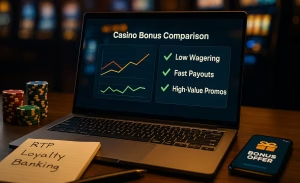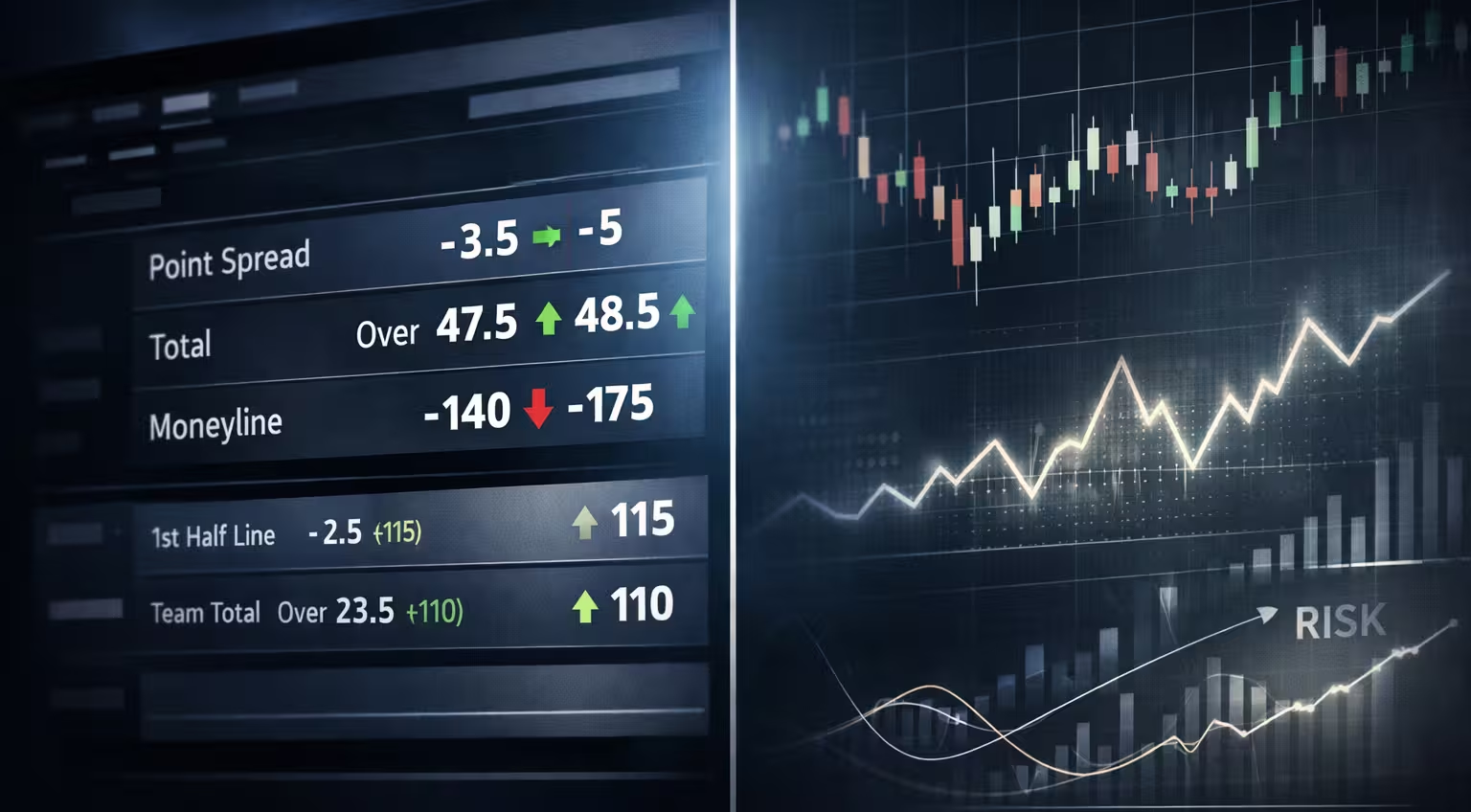Adaptive Slots: How Dynamic RTP Is Quietly Changing Casino Payouts
What if I told you the slot machine you’re playing right now might change its payout odds — while you spin — without you noticing? Sounds wild, right? But that’s exactly the shift happening behind the scenes in the world of online (and even some land-based) slot machines. The era of static return-to-player (RTP) percentages might be ending — quietly, but powerfully.
In this article I’ll walk you through what RTP really means, how “adaptive” or “dynamic” RTP is creeping into slots, why casinos are behind this, and most importantly what it means for you when you pull that lever or hit “spin” online. Because whether you play for fun or you’re chasing the next payout, you’ll want to know what the house is up to.
Understanding RTP and Why It’s Crucial to Players
Let’s kick things off with the basics: RTP stands for Return to Player — in plain English, it’s the long-term average percentage of the money wagered that a slot game is programmed to return to players. If a slot shows 96 % RTP, over a huge number of spins it should return about $96 for every $100 wagered (in theory).
Traditionally, this RTP is fixed. Game-developers build the machine or online game with a set RTP, regulators approve it, and that number stays the same. That means when you pick a slot with a higher RTP, you’re choosing slightly better odds of getting some of your money back over time.
But now: we’re seeing something new. A blurry, less obvious change. The kind of shift you may not spot until you’ve already pulled a few dozen spins and wonder why things feel a little different.
That change can be summed up as: adaptive RTP (also often called “dynamic RTP”). Rather than one fixed percentage, the game could vary its payout ratio based on real-time data, player behavior, and other behind-the-scenes triggers. That means the slot you chose might not stay at the RTP you thought it did — it could move up or down.
The Rise of Adaptive or Dynamic RTP
So why are casinos turning toward adaptive RTP? On the surface, it looks like innovation — more sophisticated technology, more “personalized” player experiences. But beneath the buzzwords lies something much bigger: control.
In traditional slots, the RTP is locked in stone. A game with 96.2% RTP offers the same theoretical return to every player, every time. But with adaptive or dynamic RTP, that number becomes fluid — shifting based on who’s playing, how they’re playing, and even when they’re playing.
Think of it as the casino version of dynamic pricing — the same principle behind airline tickets that rise and fall depending on demand. Except here, the “price” being adjusted is your odds of winning.

So how does this play out in real time? Adaptive RTP systems use a mix of data analytics, AI, and machine learning to adjust game variables on the fly. These variables might include hit frequency, bonus activation rates, and payout distribution — all within regulatory boundaries, but still enough to make a noticeable impact on your results over time.
Here are a few ways casinos are already using this technology (often without calling it “dynamic RTP” outright):
- Player profiling: The game detects your behavior — bet size, average spin duration, win/loss streaks — and adjusts return rates accordingly.
- Engagement optimization: If you’re close to quitting, the system might increase your chances of a small win to keep you spinning longer.
- Revenue balancing: During busy periods or high payout cycles, the operator can slightly tighten RTP to stabilize profits.
- Location-based tuning: In some jurisdictions, slots can automatically shift RTP ranges to comply with local laws or casino policies.
- Bonus behavior control: Adaptive models can change how often bonuses trigger based on the player’s risk level or session length.
All of this happens invisibly in the background — which is both fascinating and concerning. From a business standpoint, it’s genius. From a player standpoint, it’s unnerving.
The result? A system that appears “fair” but can subtly mold itself around player behavior. Some see this as the next logical step in gaming innovation — more personalized, more engaging, more profitable. Others see it as the beginning of a black box era in casino gaming, where fairness becomes harder to define and transparency gets buried under layers of code and optimization algorithms.
As noted by iGaming Business, AI-driven personalization in gambling raises serious questions about transparency and player consent.
And the truth is — both might be right.
Behind the Technology: How Dynamic RTP Works
To understand how dynamic RTP works, imagine a slot machine that doesn’t just run code — it thinks. It collects, analyzes, and reacts in real time to what you’re doing. That’s the core difference between old-school, static slots and the adaptive systems now emerging in modern gaming.
At its heart, dynamic RTP is powered by data loops — constant feedback between the player and the game’s algorithm. Every click, spin, pause, and wager tells the machine something about you. Over time, it builds a picture of your habits and emotions — or at least, what your gameplay says about them.
Let’s break down what’s happening under the hood:
1. Data Collection
The system begins tracking the moment you launch a game.
It logs:
- Your bet size and how often you adjust it
- Average session duration and number of spins
- How quickly you hit “spin” again after a win or loss
- Time of day and device type (desktop, mobile, tablet)
- Win/loss streaks and how they affect your betting behavior

Each of these data points feeds into a broader behavioral model — similar to how Netflix tracks what you watch to decide what to recommend next.
2. Predictive Modeling and AI
Once the system has enough information, it starts predicting your next move. Will you keep playing? Slow down? Quit soon?
It uses machine learning algorithms to group you into behavioral categories, such as:
- Casual churner: Plays lightly and leaves quickly
- Engaged grinder: Keeps betting despite losses
- Hot-streak player: Bets more after a win
- Bonus chaser: Jumps from game to game seeking features
Each category triggers a slightly different game profile. The casino’s algorithm learns which RTP ranges maximize engagement for each type — all while staying within legally approved bounds.
3. The Adjustment Engine
Here’s where it gets interesting (and controversial). The slot doesn’t directly rewrite its RNG (Random Number Generator) — that would break compliance laws. Instead, it tweaks probability weights around certain outcomes to influence short-term variance.
For example:
- The system might slightly lower bonus frequency for players on long winning streaks.
- It might increase small wins or “near-miss” patterns when data suggests you’re about to stop playing.
- It could adjust volatility to make a session feel more exciting — lots of small wins instead of long dry spells.
These adjustments happen behind the scenes, often invisibly to the player. You see the same graphics, the same reels, and the same RTP percentage listed in the info tab. But in reality, you’re not playing under a static setting — the math underneath is breathing, adapting, shifting.
4. Feedback Loop and Real-Time Optimization
After each spin, the system re-evaluates outcomes against its predictions. If your behavior changes — say, you reduce bet size or pause longer between spins — the algorithm recalibrates.
That means the RTP you experience in the next 20 spins could subtly differ from the last 20.
It’s like playing against an opponent who learns your strategy mid-game — only this one has near-instant feedback and a database of millions of previous players to draw from.
5. Why It Matters
This adaptive loop makes dynamic RTP incredibly powerful for casinos because it:
- Balances payout volatility across massive player bases in real time.
- Optimizes engagement, keeping players in “the zone.”
- Reduces revenue shocks, since operators can smooth out short-term losses.
- Tests game variants on the fly — tweaking probabilities to find the most profitable blend of excitement and payout.
But for players, it introduces a new wrinkle — unpredictability hidden behind predictability. You think you’re playing a fixed-odds game; instead, you’re part of a living algorithm designed to adjust to you.same slot game in interface and design — but with different underlying odds based on you, the player, and the moment.
Why Casinos Love It
Let’s be honest — casinos don’t just love adaptive RTP, they dreamed of it. From their side, it’s the perfect blend of math, psychology, and marketing. It gives operators something they’ve always wanted but never fully had: real-time control over profitability without visibly changing the game experience.
Here’s why it’s become the industry’s new favorite toy:
Traditional slots rely on long-term averages to balance the books. With dynamic RTP, casinos can adjust profitability on the fly.
If overall payouts are running too hot during peak hours, the system can tighten slightly to stabilize margins. During slow times, it can loosen up to boost excitement and player engagement.
Think of it as a financial thermostat — always keeping the casino’s bottom line in the comfort zone.
Casinos are obsessed with personalization. They want every player to feel like the game is “reading the room.” Adaptive RTP delivers that illusion perfectly.
If you’re a new player, the algorithm might reward you with more small wins early on — to build trust and encourage longer play. For high-rollers or frequent bettors, the system may dial back the payout ratio just enough to extend their session without obvious cold streaks.
From the operator’s perspective, that’s smart engagement marketing disguised as fairness.
Casinos know that long losing streaks kill engagement fast. Adaptive RTP can smooth those valleys out.
Instead of players hitting dry runs and walking away, the system tweaks volatility to introduce just enough small wins to keep dopamine firing. It’s the same principle social media apps use to keep you scrolling — a carefully tuned reward schedule.
Many countries have different rules for RTP disclosure and limits. With dynamic RTP, a game can automatically switch configurations depending on where it’s being played:
- UK version: 96% base RTP
- EU version: 94.5% RTP
- US version: 93% RTP, but with a “reward frequency” boost
That means casinos don’t need separate versions of the same game for each jurisdiction — just one adaptive model that adjusts itself automatically. Less overhead, more consistency, higher profit margins.
Casinos are masters at turning controversial tech into selling points. Don’t be surprised if you start seeing phrases like:
- “Smart RTP™ – optimized for your playstyle!”
- “Adaptive gaming that rewards your loyalty.”
- “Personalized win patterns for a more thrilling experience!”
To the player, that sounds exciting — even empowering. But what it really means is: the odds are adjusting based on you.
With static RTP, casinos rely on massive sample sizes to see predictable results. Dynamic RTP reduces variance and short-term swings, giving operators more stable daily profit curves. That’s gold for CFOs managing volatility across thousands of machines or millions of online spins.
In short: adaptive RTP gives casinos data-driven control of what used to be luck-driven performance. It lets them shape behavior, manage risk, and market “personalized gaming” while keeping the edge firmly on their side.
For players, it means one thing: you’re no longer just playing against cha
Why Players Are Concerned
– From a casino’s perspective, adaptive RTP is a dream.
– From a player’s perspective, it’s a nightmare in disguise.
The biggest issue isn’t that dynamic RTP exists — it’s that most players don’t even know it’s happening. The games look the same, sound the same, and advertise the same RTP ranges. But behind the shiny reels, the math is quietly shifting.
And that creates one serious problem: transparency.
The Transparency Gap
When you play a slot labeled “96% RTP,” you assume that number holds steady. But in adaptive systems, that percentage could fluctuate throughout your session — dipping lower during a win streak, or bumping higher if you’re on a cold run.
The casino might claim it’s all within the “approved RTP range,” but what does that mean for you? You might be playing at 94% for most of the night without realizing it.
This lack of visibility erodes one of the most important elements in gaming — trust.
Example: Imagine buying a lottery ticket where the odds of winning change depending on how many tickets you’ve bought that week. Wouldn’t you want to know that before you play? That’s the gray zone adaptive RTP lives in right now.
Ethical Gray Area
Casinos argue that adaptive RTP makes games more entertaining — “balancing experiences” so players don’t quit after long dry spells. But there’s a fine line between improving gameplay and manipulating behavior.
Because here’s the truth: Adaptive systems aren’t designed to help you win. They’re designed to keep you playing.
By using machine learning models to predict when you might quit, these systems can trigger “micro wins” or near-miss patterns to re-engage your brain’s reward center. It’s not random — it’s calculated psychology.
Players who understand this dynamic start to see the illusion. Those “lucky streaks” that arrive just as you were about to stop? They might not be luck at all.
Unfair Advantage for the House
Even within legal limits, dynamic RTP gives casinos an edge they’ve never had before — instant feedback on player behavior.
Traditional RTP relies on millions of spins to average out. Dynamic systems can analyze trends in minutes and make targeted adjustments that subtly tip the scales back toward the house.
That’s a level of fine-tuning that even experienced players can’t out-strategize.
Here’s the risk in plain terms:
- You can’t compare games accurately anymore — the same title may perform differently for different players.
- Tracking RTP over time becomes meaningless if it’s always shifting.
- “Skillful slot play” (like timing bonuses or selecting volatility) loses value in an adaptive system.
The Illusion of Control
Players naturally love feeling in control — picking the right slot, adjusting bet sizes, managing bankrolls.
Adaptive RTP quietly undermines that.
You might think you’re playing smarter by choosing high-RTP games or stopping after a hot run, but if the system adjusts to your patterns, those tactics become irrelevant.
The scariest part? Even savvy players can’t see when it’s happening. There’s no warning, no indicator, no notification saying:
“Hey, your RTP just dropped 1.5% because your session’s been profitable.”
Community Pushback and Player Reactions
In online gambling forums and Reddit threads, the topic of dynamic RTP is stirring heated debate. Here’s what players are saying:
- “I used to track my sessions — now the numbers make no sense.”
- “Feels like the game tightens up as soon as I start winning.”
- “How can I trust a casino that changes the odds mid-play?”
- “If this becomes the norm, I’m out.”

The sentiment is clear: players don’t want to be part of an algorithm they can’t see or control.
The Psychological Toll
There’s also the mental side. Adaptive RTP can blur the line between chance and manipulation — making losses feel personal and wins feel like bait. Over time, that can heighten compulsive behavior.
It’s the same principle behind variable reward schedules in mobile games — your brain gets trained to chase the next spin because it “feels close.”
And that’s exactly what the casino wants.
Bottom line: Players aren’t just worried about lower payouts — they’re worried about losing trust in the game itself.
Adaptive RTP introduces a new kind of uncertainty: not just will I win? but is the game changing because of me?
When players start asking that question, the integrity of the entire system comes into play.u’re no longer just playing against chance — you’re playing against an evolving system that learns from you.
Regulatory and Legal Implications
If adaptive RTP sounds like something regulators should be all over — you’re absolutely right. But here’s the catch: most regulatory frameworks weren’t built for this kind of technology. They assume slot games operate with fixed, transparent RTP values. Dynamic adjustment systems have slipped through that gap, leaving regulators scrambling to catch up.
The Problem: Old Rules, New Tech
Traditional gaming regulation was designed around three pillars:
- Fixed mathematical models (every certified slot has a static RTP percentage)
- Random Number Generators (RNGs) that ensure fairness
- Independent testing labs (like eCOGRA or GLI) that verify those numbers before launch
But adaptive RTP quietly breaks that model. It introduces a variable math layer that operates in real time, after certification — meaning the version you play today might not be the same version that was tested.
This creates what regulators call a “post-certification variance” problem:
The game passes approval under one configuration, but once it’s live, the algorithm begins shifting RTP within a preset range — say, 94% to 97%. The operator can then adjust within that band as needed, often without notifying oversight agencies.
Global Regulators Reacting (or Not Reacting)
Different jurisdictions are handling this in wildly different ways:
- UK Gambling Commission (UKGC): The UKGC requires casinos to publish game RTPs, but not necessarily dynamic changes. Some game providers are now listing RTP ranges (“94%–97%”) as a workaround. Critics argue that this approach is vague and confusing — technically compliant, but ethically questionable. The UKGC has hinted that new transparency standards are in the works, but nothing concrete has been rolled out yet.
- Malta Gaming Authority (MGA): The MGA — one of Europe’s most influential licensing bodies — has taken a cautious stance. It allows adaptive systems only if they operate within certified parameters and do not directly alter RNG outcomes. However, enforcement is tricky; many operators are licensed in Malta but operate globally, beyond its practical oversight.
- U.S. State Regulators (Nevada, New Jersey, Pennsylvania, etc.): In the U.S., regulation happens state by state. Most states haven’t explicitly addressed adaptive RTP yet, but discussions are happening behind closed doors. Nevada’s Gaming Control Board has expressed “interest and concern,” particularly over the potential for undisclosed odds manipulation in online platforms.
- Curacao and Offshore Licenses: The least regulated markets are effectively the testing grounds for adaptive RTP. Offshore-licensed casinos can roll out new systems first, observe player behavior, and refine algorithms before launching them in stricter jurisdictions.
In short: the law hasn’t caught up to the algorithm.
The Disclosure Debate
The biggest legal question now facing regulators and developers is:
“If RTP can change, how much transparency is the casino required to provide?”
Here are the current approaches being discussed:
- Static disclosure (outdated): “This game has an RTP of 96%.”
- Range disclosure (current trend): “This game’s RTP varies between 94% and 97%, depending on operator settings.”
- Dynamic disclosure (proposed): “This game’s RTP adjusts during play based on player behavior and session data.”
Only that third option would give players real clarity — but it also opens the door to intense public scrutiny, which few operators want.
The Shadow RNG Issue
Regulators are also grappling with something known as “shadow RNG manipulation.”
That’s when algorithms influence the perceived randomness of a game without directly altering the RNG code — by tweaking event probabilities or bonus frequencies instead.
It’s technically legal in many jurisdictions, but it changes the feel of randomness.
For example:
- A true RNG might trigger a bonus every 200 spins on average.
- A dynamic system might “delay” that trigger if you’re on a hot streak or increase the chance after a cold run — creating the illusion of fairness while protecting the house’s edge.
It’s not traditional cheating, but it’s not full transparency either.
Future Regulatory Trends
Expect this to become one of the next big battlegrounds in iGaming oversight. Here’s what experts predict:
- Mandatory RTP range labeling: Casinos will need to disclose not just an average RTP but the range and the conditions that affect it.
- Session-based audits: Regulators may start requiring audit logs that show how RTP fluctuated during player sessions.
- Real-time reporting systems: Some software providers are testing dashboards that stream RTP data directly to regulators — a potential game-changer for oversight.
- Player notification requirements: Eventually, laws might force operators to alert players when RTP adjustments occur — much like dynamic odds notifications in sports betting.
What It Means for You
Until those changes happen, players are largely on their own. If you see games advertising “variable RTP” or “RTP up to 97%”, that’s your signal: the numbers are flexible.
And flexibility in a casino game almost never favors the player.
Adaptive RTP is forcing regulators to rethink what “fair play” actually means in the age of AI-driven gaming.
Until oversight catches up, it’s a system built on plausible deniability — where casinos can legally say they’re compliant while quietly optimizing every spin to protect their profit margins.
The rules haven’t changed yet. But the game already has.
How to Protect Yourself as a Player
If you’re playing slots (online or land-based) and you want to stay ahead of adaptive RTP risks — here are actionable steps:
- Check the RTP before you play. If a game advertises “up to 97% RTP” or “RTP range 94-97%” be aware: that range could include adaptive logic.
- Stick to providers with strong reputations — operators audited by third parties like eCOGRA or iTech Labs are more likely to be upfront about mechanics.
- Monitor volatility and performance — If you’re used to a slot’s behaviour (say, you know it hits a bonus every ~200 spins) and you’re suddenly getting worse outcomes, trust your instincts.
- Limit your session length — Adaptive systems aim to keep you engaged for longer. Setting your own stop-time or loss limit puts you in control.
- Read the terms & game description carefully — If the RTP is described as “varies based on player behaviour” or “dynamic odds” exercise caution.
- Play within your budget — Because one of the aims of adaptive slots is to keep you spinning, you’ll want to avoid the trap of chasing that one “big one” when the odds might have shifted.
The Future of Slot Gaming
If the last decade of online gambling was defined by innovation, the next one will be defined by adaptation — both human and algorithmic. Dynamic RTP isn’t just a passing experiment; it’s a glimpse into where the entire slot industry is heading.
As artificial intelligence, behavioral analytics, and machine learning become the backbone of casino software, we’re entering an era where games will learn from players faster than regulators can write new rules.
Here’s what’s likely coming next:
From Fixed Odds to Fluid Experiences
The classic 96% RTP slot will soon feel like a relic. Developers are already building “intelligent engines” that adjust volatility, reel weighting, and even bonus structures based on real-time player behavior.
That means two players could spin the same game — at the same time — and experience completely different payout patterns.
Casinos will market it as “personalized gameplay.”
But personalization cuts both ways: it can enhance engagement or disguise reduced fairness.
Key takeaway: The next generation of slots won’t just show you odds — they’ll react to you.
AI-Driven Game Design
Game developers like NetEnt, Pragmatic Play, and Playtech are already exploring ways to use AI to design new titles automatically — predicting player preferences before a game even hits the market.
This includes:
- Adaptive volatility tuning: games that adjust risk/reward balance mid-session.
- Emotion recognition technology: reading player reactions through mobile sensors or inputs to tailor difficulty and rewards.
- Predictive reward scheduling: algorithms that calculate when a player is most likely to leave — and time a small win to keep them hooked.

That’s not science fiction — it’s the next logical step after dynamic RTP.
Transparent vs. Opaque Gaming Models
As these technologies evolve, casinos will face a crossroads:
Do they double down on data-driven optimization (which benefits the house), or embrace transparency-first gaming (which builds long-term trust)?
We’re likely to see two parallel ecosystems emerge:
- Opaque casinos: adaptive, personalized, opaque systems with minimal transparency — focused on retention and revenue.
- Transparent casinos: brands that publicly commit to fixed RTP, on-chain verifiable fairness, and player data protection as competitive advantages.
The battle between those two models could redefine the market over the next five years.
Blockchain and “Provably Fair” Slots
As trust becomes a growing issue, blockchain may offer a counterbalance.
Expect to see more provably fair slot systems — where RTP calculations and spin outcomes are verifiable on public ledgers.
Some forward-thinking operators are already experimenting with decentralized RNGs — ensuring that even the casino can’t alter probabilities mid-session.
For players skeptical of adaptive RTP, these transparent systems could become the new gold standard.
Regulation Will Play Catch-Up
Regulators rarely move faster than technology, but the spotlight is brightening.
Once adaptive RTP gains enough mainstream visibility (and backlash), expect new waves of:
- Mandatory RTP disclosures and ranges
- Session-level transparency reports
- AI ethics guidelines for gaming software
- “Fair-play certification” programs, similar to what organic labeling did for food
Casinos that get ahead of this shift will earn a competitive trust advantage. Those that resist may face future PR storms when the first major adaptive-RTP controversy breaks.
Gamification and Immersive Mechanics
Slot gaming won’t just get smarter — it’ll get more interactive.
Expect features like:
- Mini-missions and achievements that reward playtime rather than luck.
- Story-driven slots where progress unlocks bonuses or visual rewards.
- Skill-influenced events that make you feel in control (even when the math still favors the house).
- Cross-platform continuity — the same algorithm tracking your habits across desktop, mobile, and VR environments.
This evolution will blur the line between gambling and gaming — a move that excites marketers but worries addiction experts.
The Coming AI Arms Race
Casinos aren’t the only ones getting smarter. Players will, too.
Expect to see:
- AI tools for slot tracking that analyze game data and detect when RTP seems to shift.
- Community databases comparing live results across thousands of players.
- Browser plug-ins or Discord bots that alert users when payout patterns deviate from advertised levels.
In short, we’re heading for a technological tug-of-war between casino algorithms and player analytics. Whoever adapts faster wins.
The Player’s Edge Will Be Knowledge
The future of slot gaming won’t belong to the luckiest players — it’ll belong to the most informed. Understanding concepts like RTP ranges, volatility, and adaptive adjustment will be essential for anyone serious about responsible play.
Just as sports bettors use data models to identify value, slot players will use transparency tools and player networks to separate fair games from dynamic ones.
The future of slot gaming is a paradox — more sophisticated than ever, yet more personal, unpredictable, and opaque.
Dynamic RTP is just the first chapter in that transformation. What comes next will test not only player awareness, but the very definition of fairness in a game built on chance.
Conclusion: The House Gets Smarter
Casinos have always had the edge — but now, that edge is learning.
With adaptive RTP, the house isn’t just relying on math anymore; it’s using your own behavior to shape the odds. The line between entertainment and engineering is blurring, and that means players need to evolve just as fast.
What makes dynamic RTP so effective is also what makes it invisible. It doesn’t change how the reels look or sound — it changes how the system responds to you. And once a slot can adjust its payouts in real time, the idea of “fixed fairness” starts to fade.
But this isn’t a reason to quit playing — it’s a reason to play smarter.
Learn what RTP really means. Look for ranges instead of promises. Choose reputable casinos that disclose their data. Most importantly, know when to step away — because the longer you play, the more the algorithm learns.
The future of slot gaming won’t be about luck alone. It’ll be about awareness. And in a world where the house gets smarter every spin, that awareness might just be your best bet.

Alyssa contributes sportsbook/online casino reviews, but she also stays on top of any industry news, precisely that of the sports betting market. She’s been an avid sports bettor for many years and has experienced success in growing her bankroll by striking when the iron was hot. In particular, she loves betting on football and basketball at the professional and college levels.








